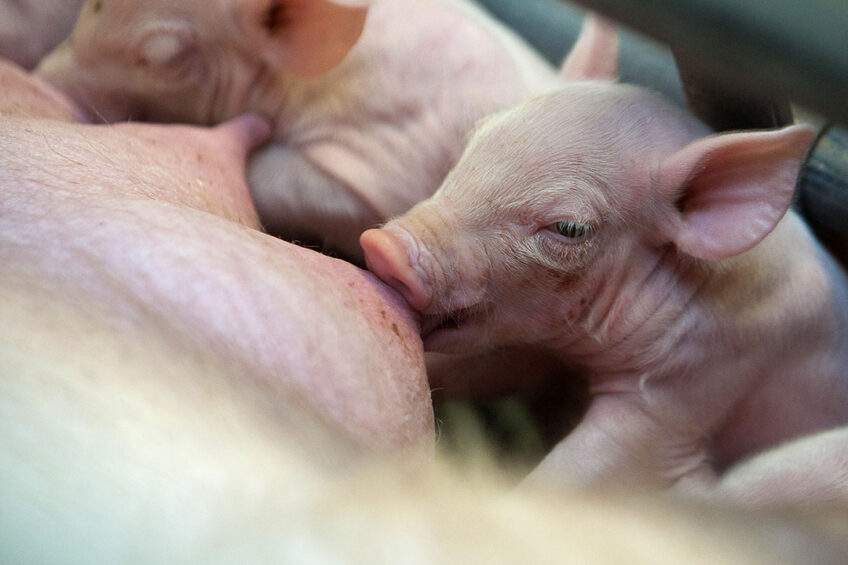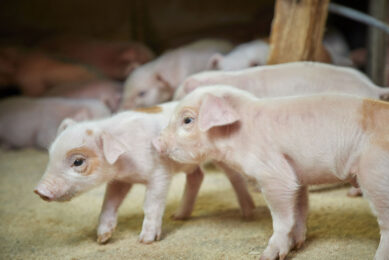Do pigs get anaemic prior to weaning?

Newborn piglets are normally given an extra dose of iron to make sure they will make it until weaning without any problems. Modern genetics, however, demands much from the piglets, which can lead to the “iron gap”. How can that be solved?
It is common knowledge that the transition from sow to nursery is one of the most critical points in a pig’s life. The stressors of weaning, movement, sorting and then learning where to locate food and water can be overwhelming. Caretakers do everything for pigs to get them started off on the right foot:
- Providing a clean, warm, safe environment with ample feed and water;
- Vaccinating them for the pathogens they will see during their growing period; and
- Giving them antibiotics if they are sick prior to weaning.
The last thing that is considered, however, is if they received enough iron 3 to 4 weeks ago.
Older weaner pigs
In the US, as in many places around the world, the trend to an older weaner pig has shown huge benefits. Being older and heavier at weaning means the pig is readier to handle the stressors of its new environment post-weaning. As the trend veers towards an older, larger weaned pig, it should also be considered that the largest, fastest growing pigs at weaning will have depleted their stores of iron.
Recent research has shown that piglets need about 67mg of iron to support 1kg of growth. If the piglet is born with 50mg of stored iron, receives only about 1mg of iron per day from the sow’s milk, and then receives the industry standard of 200mg at processing, the pig is set up for just over 3.7kg (8.2 lbs) of growth. If the pig is 1kg (2 lbs) at birth, effectively it has been supplied enough iron for a 5kg (10 lbs) weaner pig.
Iron gap
New, faster growing genetics with highly efficient sows coupled with an older, heavier pig at weaning means that the pig’s iron store is blasted through within the first couple of weeks. That leads to what is referred to as an “iron gap” – characterised as depleted iron stores before an adequate supply of iron can be absorbed from the nursery diet.
Implications of anaemia
Being anaemic can have serious implications for the pigs. Decreased oxygen-carrying capacity of the blood leads to a pig that is less active with a weakened immune response. Recent studies have shown that it can take nearly a week for anaemic pigs to catch up to their normal, non-anaemic pen mates in a nursery setting once they can start absorbing dietary iron. It should also be considered that anaemia has implications for the efficacy of vaccinations as well, with the majority of these critical vaccinations happening around the time of weaning.
For pigs to get the best start possible in the nursery, it may be time to consider a second injection of iron to sustain their vitality and growth until they can absorb iron from the diet. A second injection of 200mg of iron has been proven to sustain a piglet at optimum haemoglobin levels through weaning, even at an older weaning age. Preparing piglets for a successful and optimum transition from sow to nursery should always include injectable iron. With faster growing genetics and an older wean age, it may be time to challenge the age-old 200mg/piglet.



